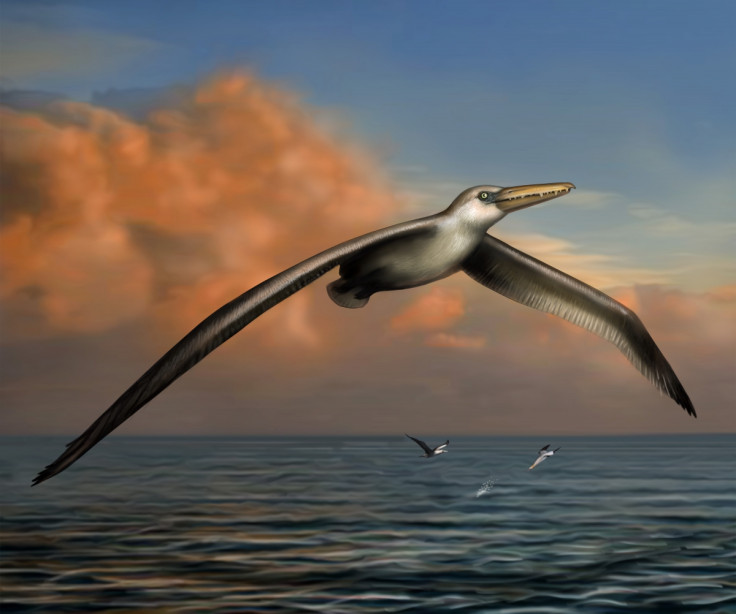Pelagornis Sandersi: World's Biggest Bird Was Twice as Big as Albatross with 24ft Wingspan

The biggest bird ever to have lived had a wingspan of up to 24ft (7.3m) - twice as big as an albatross - scientists have discovered.
Pelagornis sandersi lived 28 million years ago, after the dinosaurs had died out. They became extinct about three million years ago, just before the earliest humans appeared on the planet.
Scientists first discovered the fossilised remains of the extinct creature in 1983 in South Carolina when construction workers started excavations on a new terminal at Charleston International Airport.
The specimen now sits in the Charleston Museum where Dan Ksepka, from the National Evolutionary Synthesis Center in Durham, North Carolina, was able to identify it as a new species.
Published in the journal Proceedings of the National Academy of Sciences, the researchers found that the Pelagornis sandersi had extremely long slender wings that made it an extremely efficient glider, meaning it could stay up in the air for long periods, despite its huge size.

Ksepka identified the bird as part of the pelagornithid family, a group of massive sea birds known for having bony tooth-like spikes that line their jaws.
The new species had thin hollow bones, stumpy legs and giant wings meaning that while it was ideal for flying, it would have found land challenging.
Researchers used a computer programme to predict flight performance based on estimates of the creature's mass, wingspan and wing shape.
They found the bird was too big to take off by just flapping its wings and launching into the air. Instead, Pelagornis sandersi would have had to run downhill into a headwind or took advantage of air gusts like a hang-glider.
Once in the air, the bird would have been able to fly for miles without flapping its wings.
"Pelagornis sandersi could have travelled for extreme distances while crossing ocean waters in search of prey," said Ksepka. "Pelagornithids were like creatures out of a fantasy novel - there is simply nothing like them around today."
© Copyright IBTimes 2024. All rights reserved.






